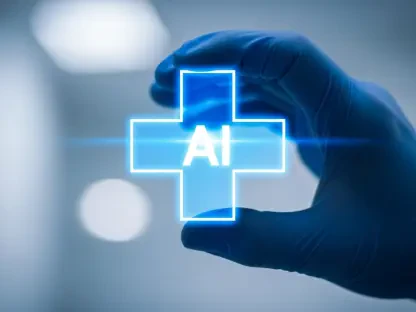The healthcare industry stands on the brink of transformation facilitated by groundbreaking advancements in artificial intelligence. OpenAI’s dramatic 80% reduction in pricing for its o3 model, a highly advanced AI system, marks a pivotal moment in this evolution. Once an inaccessible luxury, AI now emerges as a feasible asset for healthcare institutions of all scales. This price restructuring—slashing input token costs from $10 to just $2, and output tokens from $40 to $8—dispels the prohibitive cost barriers that previously deterred widespread healthcare AI integration.
Revolutionizing Healthcare Operations
Increasing Efficiency and Accuracy
The potential for AI to revolutionize healthcare operations by improving efficiency and accuracy is vast. OpenAI’s newly affordable o3 model provides an unprecedented opportunity for healthcare facilities to embrace technological advancements that were once beyond their financial reach. AI can play a crucial role in various aspects, including flagging inconsistencies within clinical documentation, ensuring records are comprehensive and accurate. More accurate documentation reduces errors and streamlines processes, benefiting both healthcare providers and patients. By analyzing patient histories, the AI can support clinicians in forming more precise diagnoses and treatment plans, ultimately enhancing patient care and reducing potential risks.
Personalized healthcare, a long-sought goal, can now become a more achievable reality. With AI’s ability to process vast amounts of data efficiently, clinicians can gain insights into individual patient histories. By recognizing patterns and trends in data, AI can assist in predicting patient outcomes and suggesting personalized interventions tailored to each individual’s unique health profile. This capability can greatly improve patient outcomes by enabling timely, proactive care, addressing issues even before they become apparent.
Streamlining Processes and Reducing Redundancies
One of the longstanding challenges in healthcare is the presence of inefficient and redundant processes that burden healthcare systems. These redundancies often result in increased costs and extended patient wait times. The integration of AI solutions like OpenAI’s o3 model can address these inefficiencies by analyzing and streamlining workflows, eliminating duplications that slow down operations. For instance, AI can optimize scheduling and resource allocation, ensuring that healthcare facilities operate at maximum efficiency. This improvement not only reduces costs but also enhances system responsiveness, ultimately improving the patient experience by minimizing wait times.
Additionally, the use of AI in reconciling data across various systems enhances the smoothness of healthcare operations. Many healthcare institutions struggle with fragmented data systems that hinder seamless information exchange. AI acts as a bridge, facilitating the consolidation and integration of data from different sources. This integration allows healthcare professionals to access comprehensive patient information more readily, leading to more informed decisions and better patient outcomes. By ensuring data consistency and accessibility, AI becomes an enabler of more effective and coordinated care delivery.
Barriers and Opportunities in AI Adoption
Overcoming Structural Challenges
Historically, the adoption of AI in healthcare faced not so much a lack of innovation but rather significant structural obstacles like high costs and fragmented data systems. By drastically lowering the cost of its AI model, OpenAI opens the door for a broader range of healthcare institutions to experiment with and adopt AI technologies. This democratization of AI usage enables even smaller healthcare providers to leverage advanced technologies previously accessible only to wealthy academic centers. Since cost is less of an impediment, healthcare leaders are encouraged to explore innovative applications of AI to enhance care delivery further.
The integration of AI in healthcare is akin to past technological shifts, such as the move towards cloud computing. Early adopters of AI within healthcare will have a significant influence on shaping its application direction, setting industry standards for its use, and driving transformative improvements in patient care and safety. Organizations at the forefront of this movement can also contribute to increased overall safety and user satisfaction, laying the groundwork for a comprehensive improvement in the healthcare experience from administrative processes to patient interaction.
The Impact of Cost Reduction on AI Integration
The substantial price reduction in AI technology essentially shifts healthcare institutions from a position of contemplation to proactive engagement with AI integration. While it may not be the time for immediate, widespread deployment, the removal of financial barriers invites healthcare leaders to take practical steps toward adopting AI strategically. Institutions that embrace this opportunity can create benchmarks for best practices, setting standards that ensure AI is used effectively and ethically.
Over time, these trailblazers can demonstrate how AI not only increases productivity but also significantly enhances patient care quality and outcomes. As such, the reduced costs prompt a necessity for strategic planning and pilot projects that rigorously test AI’s capabilities and refine its applications to suit the healthcare sector’s unique demands. The trajectory for AI, in this context, is one of gradual yet profound transformation, where its potential is harnessed to usher in enhanced procedural safety and user experience, benefiting both providers and patients.
Paving the Way for Healthcare AI Innovation
The healthcare sector is on the verge of a transformation, propelled by revolutionary advancements in artificial intelligence (AI). A significant factor contributing to this change is OpenAI’s substantial reduction in pricing for its o3 model, a highly sophisticated AI system. This 80% price cut heralds a new era, where AI becomes an attainable resource for healthcare facilities of all sizes, rather than an exclusive luxury. By decreasing input token costs from $10 to a mere $2, and dropping output token prices from $40 to just $8, OpenAI has effectively addressed the financial barriers that once hindered the widespread adoption of AI in the healthcare industry. This shift not only makes AI affordable but also paves the way for enhanced patient care, improved medical research, and more efficient healthcare operations. Ultimately, the reduced costs enable a more extensive integration of AI, allowing hospitals and clinics to leverage this technology to improve diagnosis accuracy, optimize treatment plans, and enhance overall healthcare delivery.









